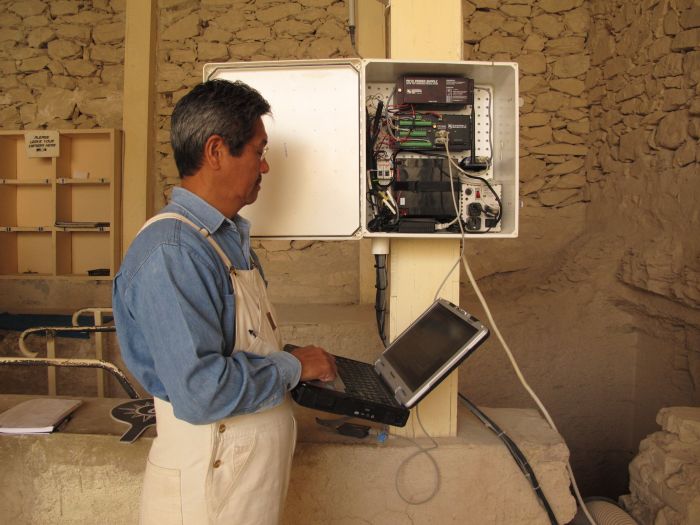






In 1922, when the tomb of Tutankhamen was discovered in Egypt's Valley of the Kings, the tomb was full of treasures, artwork, and other artifacts. In most other tombs that archaeologists discovered, these things had been stolen or vandalized before preservation-minded people could protect them. Tutankhamen's tomb has stayed largely unmolested up to this day, and is now one of the most-visited sites in the Valley of the Kings.
The tomb walls are covered with priceless murals, but as time has passed, the paintings have begun to deteriorate. Since the large number of visitors may be contributing to the problem, Egypt's Supreme Council of Antiquities (SCA) and the Getty Conservation Institute are collaborating on a three-phase plan to evaluate and manage the effects of visitors on the condition of the tomb.
Phase 1 includes measuring the microclimate in the tomb and at the site. Sensors measure air temperature, humidity, and carbon dioxide, and count the number of visitors. The data is captured with a Campbell Scientific CR10X datalogger (to be updated to a CR1000 when political conditions permit) and transmitted via cell modem to a land line and then to the project's headquarters at the Getty Center in California. The data are then posted automatically on the project website.
During Phase 2, the Getty and the SCA will analyze the data and determine what effect visitors have on the microclimate of the tomb, and what effect any changes in the microclimate have on the deterioration of the tomb paintings. They will then design strategies to manage these factors and their effects.
Phase 3 will entail implementing new procedures, and continuing to monitor the microclimate to gage the effectiveness of the visitor-management strategies. The caretakers of the tomb will also continue to study ways to preserve the tomb and the murals for the future.